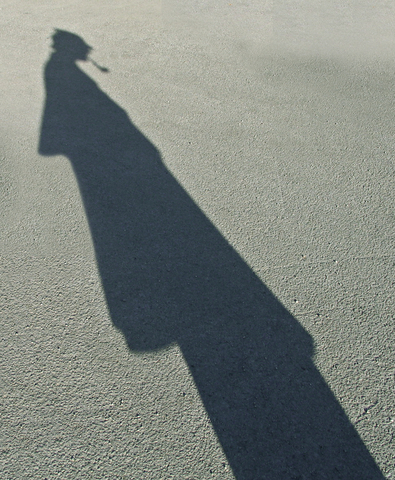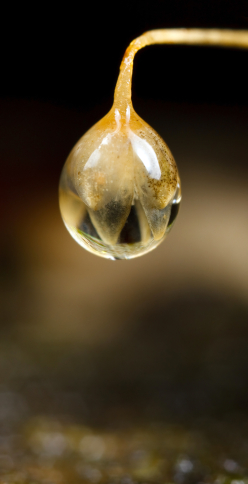NewsFlash: ‘First’ Non-Hormonal Treatment for Hot Flashes – Brisdelle
It’s very important when you see news headlines that you read between the lines.
This came across my mailbox earlier in the week:
Noven Receives FDA Approval for Brisdelle™ (Paroxetine) Capsules, the First Nonhormonal Therapy for Vasomotor Symptoms Associated with Menopause
So, let me explain.
Brisdelle is the first non-hormonal treatment for menopause to receive FDA approval. But, it’s not the first nor the only nonhormonal treatment for vasomotor symptoms; heck, one glance at the tag cloud or the archives and you will see that there are lots.
Claim aside, it’s important to break down the news for you.
Brisdelle is a low-dose form of Paxil, an SSRI antidepressant. Because of its dosage, it is only indicated for treatment of hot flashes and night sweats, and not for depression, obsessive compulsive disorder and anxiety.
This is what I wrote late last year when Noven first presented study findings to the North American Menopause Society:
Paroxetine is not the first antidepressant to be studied in menopausal women and you may recall that I wrote about the use of Lexapro for hot flashes about two years ago. You can find that post here. However, paroxetine is the antidepressant that’s all the buzz right now, since Noven Pharmaceuticals presented two studies last week at the North American Menopause Society annual meeting. Note that it’s been reframed as ‘low-dose non-hormonal therapy for menopausal vasomotor symptoms,’ but ya still gotta call a spade a spade and what it is is an antidepressant.
In one of two studies, 568 women (40+ years of age) who experienced 7 to 8 moderate or severe hot flashes on a daily basis of 50 to 60 on a weekly basis took either 7.5 mg of LDMP or placebo daily over six months. By the end of the first month (and in contrast to the study’s start), women who were taking LDMP experienced 28.9 fewer hot flashes per week (compared to 19 fewer per week for women taking placebo pills). By the third month, this increased by roughly 10 fewer per week in both groups. The severity of the hot flashes also significantly decreased. Safety wise, women taking LDMP reported nausea and bronchitis.
In the complementary study, which lasted for three months, 606 women in the same demographic took the same dose of LDMP or placebo. Decreases in mean number of flashes per week were pretty much on par with the first study (33 compared to 23.5 for placebo) and similarly, a trend towards maintaining and growing benefits were observed. Severity of hot flashes also declined but by the study’s end, were not significantly different than placebo. This time, women who took LDMP most frequently reported dizziness and fatigue.
Dr. James Simon, one of the studies’ investigators and a professor of ob/gyn at GWU School of Medicine claims that symptoms of menopause often go untreated when women are unable or unwilling to take hormone therapy, which is not entirely true. Another investigator — Dr. Andrew Kaunitz from the University of Florida College of Medicine in Jacksonville notes that if LDMP is approved by the FDA, “it could be the first nonhormonal option available for women.” Again, this statement is not entirely true. LDMP has the potential to become the first nonhormonal treatment APPROVED by FDA for vasomotor symptoms in menopausal women. There are other options out there but on the most part, they are not embraced by Western practitioners. Take note: while many Western practitioners will argue until they are blue in the face that alternative strategies have no role, are no better than placebo, and do not have evidenced-based trial data to support their use, they are simply incorrect. An unequivocal statement about every alternative strategy available to wo-man is bad medicine at best and at worst? Sheer ignorance.
Back to LDMP…LDMP appears to effectively diminish hot flashes and sweats but it is not without side effects. And while the dosage is considerably lower than full-strength antidepressants, we don’t have enough information to know if it will ultimately mimic its higher dose partner; the most common side effects reported in these trials are the very same that have been reported with Paxil. Another common side effect of Paxil is the effects on libido and it is a well known fact that as many women go through menopause, they experience declines in sex drive, lubrication and the ability to reach orgasm. In the pivotal studies used to gain approval, about half of the women appeared to have sexual dysfunction; what’s unclear is whether or not the cause was the drug or menopause itself. Another important point that is missing from this story is that back in March, the FDA’s advisory committee on reproductive drugs voted against approval, stating that paroxetine’s effectiveness in reducing hot flashes was underwhelming and not unlike that seen among women taking placebo in clinical studies.
I applaud Noven for its efforts to offer an alternative to HRT, one that has been approved by the FDA. However, the way that communications about this agent are being framed, it appears that the spin masters are working overtime. It’s essential to understand that this treatment is non-hormonal but still a pharmaceutical agent. And while I am a huge proponent of antidepressants for depression, I remain skeptical that they are the best agents for addressing menopausal symptoms. Cost may be an issue – no word on the price point as of yet.
I guess that time will tell.
Read More
Household work..the key to better sleep?
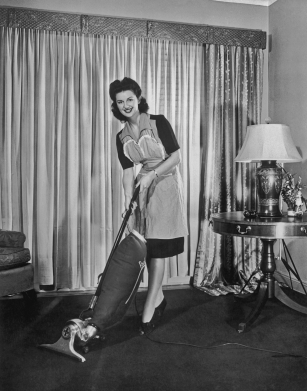 Have I got your attention yet?!
Have I got your attention yet?!
It’s no surprise that hot flashes and night sweats rank among the most important factors when it comes to poor sleep. However. less clear are the factors that may provide a buffer against the flashes. And aside from the usual suspects e.g., crankiness and moodiness or the inability to focus, poor sleep has been linked to heart disease and obesity, among other less desirable health conditions.
So, what can you do?
I’ve written about the benefits of physical activity and amelioration of menopausal symptoms many times on Flashfree. And, I imagine I will continue to do so. But what about sleep? There is evidence that physical activity can help bolster both sleep quality and sleep quantity. Yet, few people have examined the domino effect, i.e. fewer hot flashes ← physical activity → better sleep. Moreover, even fewer have considered the benefits of non-leisure physical activity, like housework.
Now, before you accuse me of setting women back 60 or 70 years, let’s consider exactly what I am suggesting.
According to research, women participate in less leisure time physical activity but greater levels of household physical activity than their male peers. This is apparently truer among ethnicities other than Caucasian (especially African American), who also tend to have greater levels of obesity and poorer sleep characteristics. So, it would follow that by increasing both, women might fare better in the sleep department, right?
In fact, when researchers took a small group of women participating in the larger SWAN study and evaluated their self-reported and scientifically measured sleep patterns for four nights, that is exactly what they found. The group, which was comprised of both White and African-American women, reported having flashes or sweats, were between the ages of 54 and 63, had an intact uterus and were not on medications that could affect hormone levels or symptoms. And while the number of women was quite small (only 52), they fit into the full spectrum of BMI targets (from normal to obese to overweight). In addition to sleep patterns, they also shared details of their most common daily physical activity (how often, how long and how intense) and household/caregiving responsibilities (time spent caregiving, preparing/cleaning up after meals, and routine chores as well the intensity of these activities).
Not surprisingly, women who had greater levels of leisure physical activity were 8 times more likely to report that their sleep quality was better than their less active peers. And, women who reported greater household, non-leisure physical activity awakened fewer times during the night, but only if their BMI levels were lower. Yet, the benefits were mostly seen more among White women. Even more troubling is that the researchers say that they could not determine the ‘why’ of these findings, even though they conducted several different types of analyses and comparisons.
The good news is that for some women, engaging in greater levels of household physical activity and leisure physical may reduce sleep disturbances, especially if they are not overweight. For others, especially my African-American sisters, the mystery remains. African-American women often report more severe hot flashes than their White peers. And while experts have pointed fingers towards rates of obesity or distinctions in estrogen levels or smoking history, the reasons remain unclear.
Meanwhile, while I am not necessarily suggesting that you increase your household responsibilities, I do believe that even with the limitations of this study, more physical activity may beget better sleep and possibly fewer or less severe hot flashes. Finally? Can we please find some effective and viable strategies for women of colour? Although the menopause experience may vary by ethnicity, as women, we need to find solutions that work for most of us, not some of us.
Read MoreMenopausal Symptoms? It’s Elementary!
Can you predict what perimenopause may be like? Believe it or not, it appears that certain past events throughout a woman’s reproductive life have more value than meets the eye. In fact, using questionnaire data collected from 290 peri- and postmenopausal women, researchers believe that they have found certain clues. For example, women who reported more severe physical symptoms during perimenopause experienced more severe physical symptoms during other times that their hormones were fluctuating:
- just before their menstrual period
- during pregnancy
- directly after giving birth
- during oral contraceptive use
The best predictors of menopausal pain and discomfort — achy muscles or joints, neck or head pain, lack of stamina, fatigue, low back ache, lack of concentration, bloating? The PMS experience! PMS with pain, lack of concentration and bloating appear to be the linked to the worst physical symptoms around the menopausal transition. And what about hot flashes and night sweats? It appears that most PMS symptoms (e.g. water retention, negative mood, concentration, cramps), fatigue, heartburn, headaches, backaches and hemorroids during the postpartum period, and physical effects of oral contraceptive use (e.g.headaches, bloating, tender breasts, nausea, aches, pains, cramps) are a harbinger of the worst vasomotor symptoms during perimenopause.
It’s important to keep in mind that other factors come into play during menopause, such as overall health, stress and attitudes towards aging. And as I’ve written time and again, all of these factors can influence the menopause experience. Past reproductive experience appears to account for up to 40% of how badly perimenopause may play out. Meanwhile, think back on your reproductive history. And start preparing now to deal with bothersome symptoms as they arise. It really is elementary!
(This study appears in the online edition of Menopause.)
Read More
Wednesday Bubble: Are you resilient? Or vulnerable?
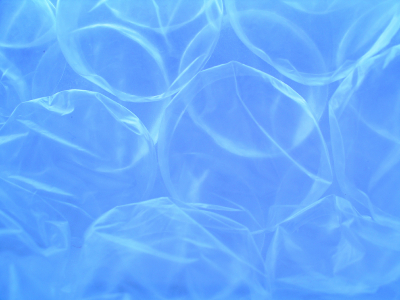 Hot flashes and night sweats. Why is it that some women seem more prone to one or both and others simply sail through menopause with flying colours, that is, why are some women resilient to symptoms and others vulnerable? Are genetics or race or psychosocial factors at play? Moreover, are there ways to predict which camp you fall into before you start menopause so that you can employ preventive measures or mentally prepare for what may come?
Hot flashes and night sweats. Why is it that some women seem more prone to one or both and others simply sail through menopause with flying colours, that is, why are some women resilient to symptoms and others vulnerable? Are genetics or race or psychosocial factors at play? Moreover, are there ways to predict which camp you fall into before you start menopause so that you can employ preventive measures or mentally prepare for what may come?
By examining information collected on over 4,000 women across the UK, researchers believe that they may have found a few answers to why some women do and some don’t. Here’s the lowdown:
Researchers first grouped 23 menopausal symptoms into six unique clusters, psychological, sexual, general, musculoskeletal, menstrual and bloating. They then further divided them by frequency and severity. The results?
Resilience to hot flashes appeared to be bolstered by having experienced less bother during menstrual periods, having fewer general symptoms (such as breathlessness, a frequent need to urinate, headaches or dizziness) and the perception that menopause and its symptoms did not have a significant consequence on one’s life.
Conversely, vulnerability to hot flashes appeared to be related to having one or more children, having a higher (>25) BMI, experiencing night sweats and the perception that menopause and its symptoms had a moderate to highly significant life impact.
How’s your physical health? Evidently the worse it is, the more vulnerable you are to night sweats. If you have hot flashes, you may also be more vulnerable; accompanying muscle and joint aches So does having sleep difficulties or a perception that menopause has a significant impact on your life. Women who are resilient to night sweats don’t smoke, tend to rely on psychological strategies to help manage their symptoms and like their hot flash counterparts, don’t perceive menopause as having a significant impact on their lives.
If you are wondering why any of this is important or relevant, just think about it: having a greater perception that menopause has a negative overall impact on one’s life can impact resilience or vulnerability to some of its most troublesome symptoms: hot flashes and night sweats. This suggests that behavioral or psychological interventions, seeking social support or simply learning more about the ‘pause may potentially impact how bad (or good) it ultimately is. Moreover, clusters of these factors appeared to have a greater or lesser impact, which truly challenges the ‘one size fits all’ model of treatment.
Menopause and (and how we go through it) isn’t always our choice. But isn’t it refreshing to know that there are aspects about the ‘pause that ARE in your control? Stop smoking if you are a current smoker. Think about how you allowing aging to impact how you perceive your life and if there are steps that you can take to do a 180 attitude adjustment. Try to shed a few pounds if you can. And if you are in the premenopausal phase, take some steps now to shift the ‘tude when your period hits.
Resilient or vulnerable? It may be up to you, at least in part.
Read More
Wednesday Bubble: Soy takes a hit (again). But what about S-equol?
Soy is back in the news again, with newly published data suggesting that isoflavones may not be particularly effective when it comes to menopausal symptoms. But I can’t stress enough on this blog that sources are as important as substance; in other words, not all sources are equal and neither are the women who use these alternatives.
So, let’s talk again about S-equol. But first, a bit of context is needed.
We know that soy isoflavones, primarily genistein, daidzein and glycitein have been suggested as an effective strategy for combating menopausal symptoms such as hot flashes or night sweats. The beneficial effects of soy are believed to be associated with the ability to soy isoflavones to attach themselves to estrogen receptors. Importantly, our brains contain certain estrogen receptors in hippocampus, which is responsible for consolidating both short and long-term memory and spatial navigation. Moreover, both genistein and daidzein have been shown to have a particular affinity for the very type of estrogen receptors that reside in the hippocampus, which is why researchers have been so interested in determining if ingesting soy can help combat the natural decline in memory and cognition. While findings have been mixed, some women appear to be better metabolizers of S-equol, a metabolite of a major soy isoflavone called daidzein. It has a particular affinity for estrogen receptors and possesses some estrogen-type activity of its own. S-equol is produced in the GI tract however the ability to actually manufacture it depends on the presence of certain microflora. Consequently, only 30% to 60% of individuals are actually able to produce S-equol on their own (although this figure is believed to be higher among Asians and vegetarians).
I’ve been writing about S-equol for a number of years and you can revisit those posts here. Interest in S-equol is in part, related to its potential for augmenting the benefits of isoflavones; in fact, it is possible that women who are naturally producers of S-equol actually experience greater effects from soy products, and this is especially true when it comes to bone health. Hence, vasomotor symptoms — night sweats and hot flashes — aside, you may not want to give up on soy just yet.
So let’s talk bone health. It’s so critical as we age.Declining levels of estrogen are a primary cause of bone loss and resulting osteoporosis in women; indeed, one in five American women over the age of 50 have osteoporosis and about half will experience a fracture in the hip, wrist or spine as a result. What’s more, because osteoporosis is silent in its early stages, causing no symptoms, it’s critical that bone loss is halted or at least slowed either before or during the most critical phases strike. There is no time like the present to take preventive measures, even if you are in your 30s and 40s.
Where does S-equol fit in?
Last year, researchers demonstrated the daily S-equol supplements taken by women who are not naturally producers of S-equol, may improve bone metabolism and attenuate bone loss. And I reprinting this information because it’s too early for a soy verdict.
In this 1 year study of 356 healthy, postmenopausal Japanese women between the ages of 41 and 62, daily intake of 10 mg S-equol via supplement markedly reduced markers of bone resorption in blood and urine compared to women taking placebo pills or 2 mg or 6 mg of S-equol daily. In fact, in women taking the 10 mg dose for a year, declines in a urinary marker of bone resorption (i.e. DPD) were roughly 21% greater compared to placebo. Measures of whole body bone mineral density also showed that S-equol supplementation protected against bone loss, although not to the extent as bone resorption. These results remained even after changes in height, weight, body mass index, lean and fat mass were accounted for. No participant experienced serious side effects from taking S-equol and hormone levels were not adversely affected.
Does this mean that you should rush out and purchase S-equol supplements?
One of the primary limitations of this study is that the process of bone recycling can take as long as 18 months and the time required to complete a cycle may actually increase with age. Thus, the duration of time that the women were studied might be too short to draw any definitive conclusions. Hence, you may want to wait before you start taking S-equol. However, the evidence that’s building continues to put the weight on the benefits versus risks side. Only time will tell. Meanwhile – remember that the source of S-equol is important. If you are going to look for supplements, go for products that state that they are standardized on the label. Food sources, e.g. tofu, are always a good bet but again, not every woman will metabolize soy the same way. Still, here’s to yourhealth. Keep on doing all you can do to keep the faith and stay the course.
It ain’t over til the fat lady stops sweating!
Read MoreDiet and fat and flashes! Oh my!
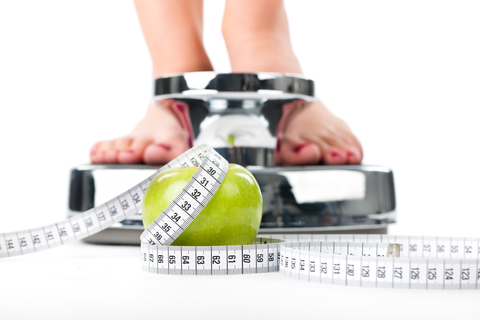 A lot of you have written to me back channel to see if there is any evidence that diet affects menopausal symptoms. Up until now, I have run across many articles but little evidence on the topic. Hence, I was heartened to read about the positive effect of dietary changes and weight loss on hot flashes and night sweats in the online edition of Menopause.
A lot of you have written to me back channel to see if there is any evidence that diet affects menopausal symptoms. Up until now, I have run across many articles but little evidence on the topic. Hence, I was heartened to read about the positive effect of dietary changes and weight loss on hot flashes and night sweats in the online edition of Menopause.
The original intent of this study of over 17,000 women was to assess how a low-fat diet might benefit heart disease, breast and colorectal cancer and fracture risk among postmenopausal women. Nearly half of the women were asked to reduce their fat intake to only 20% of total energy and increase daily fruits and veggies intake to at least 5 servings daily, and whole grains, to 6 servings daily. Over the course of 5 years, they also received regular, intensive behavioral training conducted by a nutritionists and registered dietitians. The other half of the women only received a copy of Dietary Guidelines for Americans and other health-related materials. All were between the ages of 50 and 79.
Although weight loss was not a study goal, per se, on average women who agreed to changes in their diet lost an average of 4 pounds in the first year. And these women were able to reduce night sweats and hot flashes. What’s more? Women who lost more than 10% of their overall weight were significantly likely to eliminate their symptoms entirely (note that only a small proportion of women — 1% — reported having severe night sweats or hot flashes and symptoms were mostly mild to moderate in intensity). But, the findings get even more granular. The researchers write that when they did an additional analysis that women who lost the most weight (22 lbs) had more than twice the odds of eliminating moderate or severe vasomotor symptoms compared with women who maintained their weight.
Although the reasons are unclear, weight loss may reduce the amount of adipose tissue -the tissue that stores fat — and by default, reduce its insulation-type, thereby boosting the body’s ability to attack excessive body heat. Regardless, there are many reasons to maintain weight as we age. If this is an additional benefit, I say bring on the fruits and vegs!
Read More







